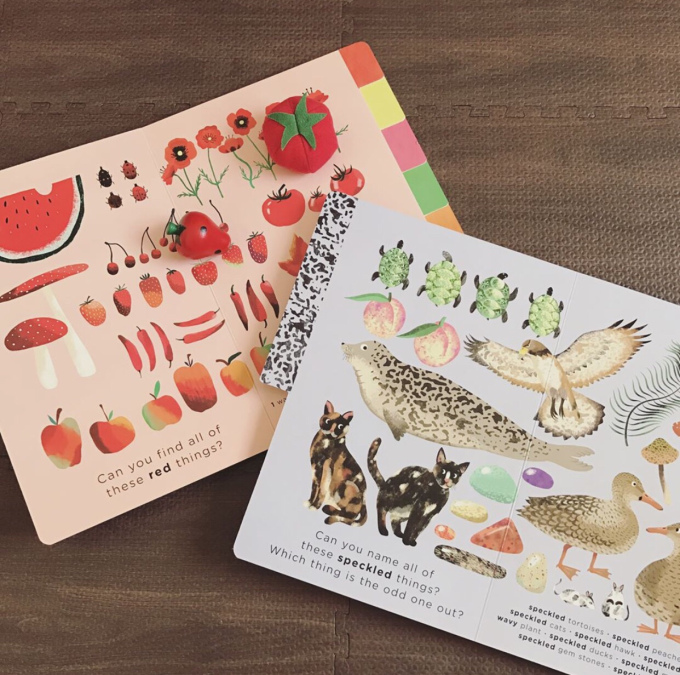My Top Tips for Choosing Children’s Books
There is no such thing as ‘too early’ when it comes to introducing books to our children.
In fact, children who are acquainted with books at an early age are more likely to develop a love for reading. However, with so many types of books marketed as “children’s books” nowadays, I know how daunting it can be for parents to choose which ones (out of the many) to get.
Today, I’m excited to share with you the key questions I ask myself before making a book purchase, plus two recent book buys that I absolutely adore. You’ll also discover my top tips for choosing books for babies, toddlers, and preschoolers, and a list of my all-time favorites. With this guide, your next book choice for your child will be a breeze and perfectly suited to their needs.
Just in case you didn’t know, I am a huge bookworm and personally, I’m as selective about the books I buy for my kids as I am about the toys I get for them. The books I add to my collection have to fulfill quite a number of criteria and below you’ll discover the 5 quick questions I ask myself before I make a purchase.
Table of contents:
- My 5 criteria for choosing children’s books and our favourites
- Tips for choosing books ideal for babies
- Tips for finding the right books for toddlers
- Tips for selecting the books that intrigue preschoolers and beyond
My 5 criteria for choosing children books and our favourites
1. Are the illustrations beautiful?
Yes, I totally judge a book by its cover and the illustrations inside! 😂 Illustrations need to be captivating enough to capture our children’s interest or else we would not get their attention. So consider books with vibrant, engaging artwork that invites them to look closer and pore over the pages a little bit longer. Great illustrations prompt meaningful conversations about the book and provide more opportunities for language development.
For instance, “The Very Hungry Caterpillar” by Eric Carle is a classic with its vibrant colours and textured illustrations that practically leap off the page, encouraging little fingers to explore every detail.
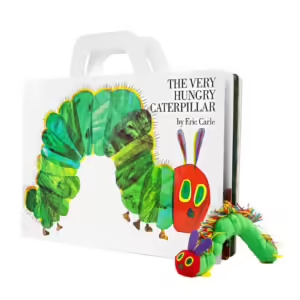
Another great option is “The World Needs Who You Were Made to Be” by Joanna Gaines. The illustrations by Julianna Swaney, are vibrant, whimsical, and inclusive, beautifully capturing the individuality and diversity of each character, reinforcing the book’s message that we are all wonderfully unique.
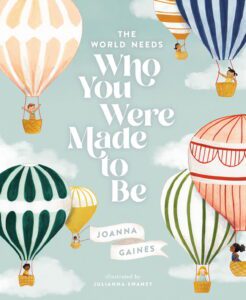
2. Do they inspire creativity and imagination?
I personally go for books whose illustrations and stories evoke emotions and raise questions from curious minds as these make them want to explore and read more.
“Mix It Up!” by Hervé Tullet is my top choice for this criteria. It’s one of those books that just pulls my big girls right in— it’s like every page invites them to interact, and makes them very curious as they flip through. The playful instructions and those bursts of colour make it feel like they’re creating magic with their hands. It’s just so exciting to see them thinking about colours and how things change!
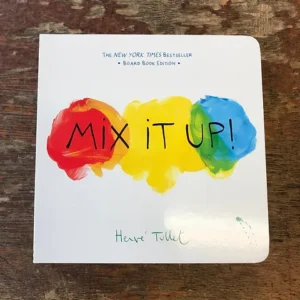
Another favorite is In My Heart: A Book of Feelings by Jo Witek and Christine Roussey. Oh, I can’t stress how this book has such beautiful ways to explore emotions. I personally think the heart-shaped cutout that changes as pages are flipped is just so clever, and the illustrations really draw my girls in. It also talks about feelings in a poetic way which I believe makes my girls think about their own emotions in a way that’s both deep and meaningful.
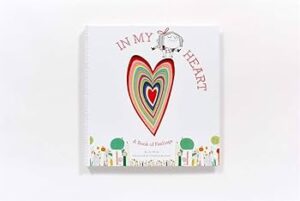
3. Do they enable connections to life experiences?
Can my child relate to the stories or illustrations in the book? Can they easily draw connections from our life experiences? For instance, if a book features animals or objects they’ve seen from our family trips, usual daily activities, or Family Adventure Fridays, it can help them better understand what they’re reading and make the reading experience more meaningful.
For this criterion, I’ve found that Beautiful Oops! by Barney Saltzberg is a gem. It’s one of those books that really speaks to kids about seeing ‘mistakes’ in a whole new light. Just like in every other home with children, spills, tears, smudges, and other flaws are a part of ours too. I love how this book teaches my girls how these aren’t really flaws but actually chances to get creative. I’ve seen how those little “oopsies” turned into something beautiful and I think it’s a wonderful way to encourage resilience and creativity- core life skills I want my girls to achieve.
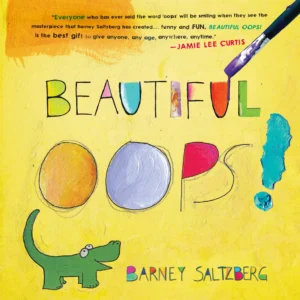
I also love My Calm Me Down Book by Tracey Moroney. The illustrations are so soothing, and the gentle storylines are helpful so children can get in touch with their emotions. For example, my girls learned simple mindfulness practices, like taking a deep breath or focusing on a small detail, which they can easily relate to. The familiar scenarios make it easy for them to connect the book’s content to their everyday life, making the experience even more meaningful.
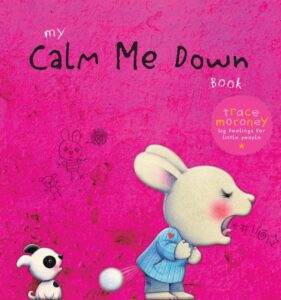
4. Can I use these books across different ages?
A great children’s book should grow with your child. I have 4 girls under 8 and I love it when I find a book that I can use with all 4 of them in various ways.
I recently bought these two books that I absolutely love – Technicolour Treasure Hunt and Pattern-tastic Treasure Hunt. They introduce colours and patterns using things from the natural world. Imagine how exciting a trip to the local farmer’s market or a nature walk could be, knowing that colours and patterns are everywhere around them if they observe closely.
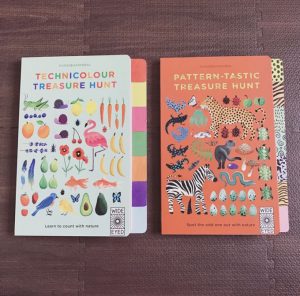
These books allow my toddler to make connections between things she’s seen and experienced. For instance, when we first looked at the colour red, she paused in thought, then suddenly got up to get a wooden strawberry and a felt tomato from her toys and matched them to the pictures in the book on her own accord. She even mentioned “mama” (her grandma) when we talked about the red chili, remembering the chili plants in her grandma’s garden.
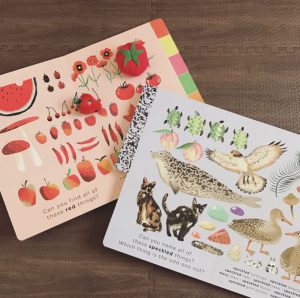
I also love that these books can be used across different ages. For older toddlers and preschoolers, the pages can serve as prompts and inspiration for engaging in process art and making transient art using loose parts.
5. Do they encourage exploration and learning?
Finally, I believe that the best books are those that encourage children to explore and learn more about themselves and the world they are in. Books that delve into cultures, the natural world, and diversity can spark curiosity and expand their understanding of different subjects.
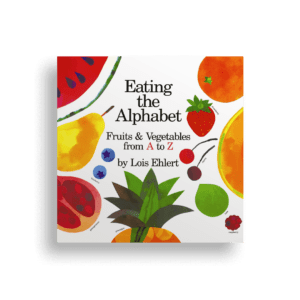
Eating the Alphabet by Lois Ehlert is one great example of this. This book introduces my girls to all sorts of fruits and veggies, apricots, kiwis, and mangoes, as well as veggies like zucchini and eggplant and they get a kick out of learning about foods from around the world. Plus the alphabetical format is a nice bonus for helping with language skills!
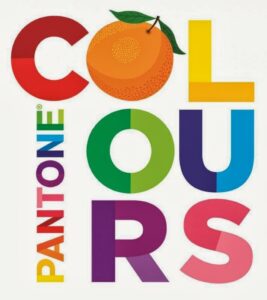
Another book I think is best for this criterion is Pantone Colors. It’s been such a cool tool my girls use for exploring different shades and hues. My older kids especially get into it because it goes beyond just the basic colours, helping them really appreciate the variety of colours around them. It’s a great way to deepen their understanding of colours while also sneaking in some language development!
So that wraps up my 5 criteria for choosing children’s books! As we dive more into this topic, it’s also so important to choose books that fit your child’s developmental stage. So I’ve gathered my top tips for picking books based on your child’s age—be it babies, toddlers, or preschoolers below that aim to help you make informed choices that truly resonate with your child’s needs right now.
Tips for Choosing Books Ideal for Babies
When it comes to selecting the perfect books for babies, it’s all about simplicity and durability. At this early stage, babies are just beginning to explore their world through their senses, so choosing the right books can make a big difference in their development and enjoyment of reading.
When choosing a book for your baby, consider these questions:
Is the book durable?
We’ve all seen how babies love to explore with their mouths—it’s just part of their natural curiosity during the mouthing stage! Oh, I can still remember when my littlest one used to chew on everything 😂
That’s why picking a sturdy board or cloth book that can take a bit of rough handling and mouthing is crucial.
Does it have sensory elements?
Sensory elements are so important for babies because they keep them engaged by making reading time interactive. Books with different textures, flaps, or even sounds can transform reading into a delightful multi-sensory adventure, keeping our little ones engaged and helping them learn about the world around them.
Tips for Finding the Right Books for Toddlers
As parents, we all get that toddlers are naturally curious little explorers, always eager to learn new words and understand the world around them. I remember when my kids were at that age—keeping them entertained was no small feat! When choosing books, aim for ones that captivate their interest because, let’s be honest, their attention spans can be pretty short. It’s all about finding those gems that keep them engaged!
When choosing a book for your toddler, consider these questions:
Does it have interactive features?
Interactive features are a game-changer for toddlers. Books with flaps, textures, or sound buttons can make reading more engaging, transforming it into an interactive play session. Sensory books, pop-up books, and lift-the-flap books are all great options. Books like “Mix it Up!” and “Press Here” by Hervé Tullet, as well as “Tap the Magic Tree” by Christie Matheson, are fantastic examples that keep little hands and minds busy.
Does it have rhymes?
Rhyming is super important for our little ones (I can’t stress this enough)! Not only does it make stories fun to listen to, but it also boosts their language skills. I always find that books with rhythmic and repetitive texts are perfect for toddlers because not only do they love to mimic and repeat, but this also helps them develop early literacy skills.
Repetition of words, ideas, and skills is important for early brain development, as it creates secure foundations for early learning. This not only builds their vocabulary but also sharpens their memory and cognitive abilities. From my experience, it’s amazing to see how quickly they pick things up!
Moreover, reading a book with rhythm helps children to engage and remain engaged in the reading process, create new brain connections, predict the number of beats (syllables) that come next, and develop a number of things like 1-1 correspondence (developing math skills while reading?! Heck yes!), memory skill, phonological awareness and a sense of rhythm.
All of these things mentioned contribute to your child developing pre-literacy skills.
In this post, I’m sharing some tips on how I keep my distracted toddler engaged with a book . As a parent, I know it’s not always easy, but with a bit of creativity and patience, we can make reading time enjoyable and engaging for our little ones.
Tips for Selecting Books That Intrigue Preschoolers
Preschoolers, or children between 3 to 6 years old (and beyond), are ready for more complex stories and can handle longer attention spans. At this stage, they are emerging readers; they begin to recognize words and will show interest in learning to read independently.
It is essential to choose the right books that can support and enhance their imagination and encourage a lifelong love for reading.
When choosing a book for your preschooler, consider these questions:
Is your child interested in the book?
Yes, interest is key! When a child is interested in a book, they are more likely to engage with it and develop a lifelong love for reading. For example, if your child is fascinated by Disney characters, Pokémon, or Bluey, it’s a great idea to add a few themed books to your home collection. This helps them connect with the stories and characters they already love, making reading time even more enjoyable.
Does the book have an engaging storyline?
An engaging storyline is key for preschoolers to fall in love with stories and draws them into the world of books and reading. Consider looking for books with well-developed characters and storylines that resemble natural, conversational language rather than the choppy, unnatural sentences often found in early reader books.
Books like Mo Willems’ Elephant and Piggie series, Rachel Bright’s Charming Stories, or anything by Julia Donaldson are great examples. These kinds of books help your preschooler become more engrossed in the story and develop better comprehension skills.
(A gentle reminder: It’s totally fine for preschoolers to revisit simple picture books they loved as toddlers. Familiar stories can provide comfort and reinforce their learning.)
Key takeaway
Choosing the right books for your child can greatly enhance their learning and development while fostering a love for reading. By considering the criteria, tips, and recommendations I listed above, you can confidently select books that your baby, toddler, or preschooler will surely love 🙂
26
Apr
